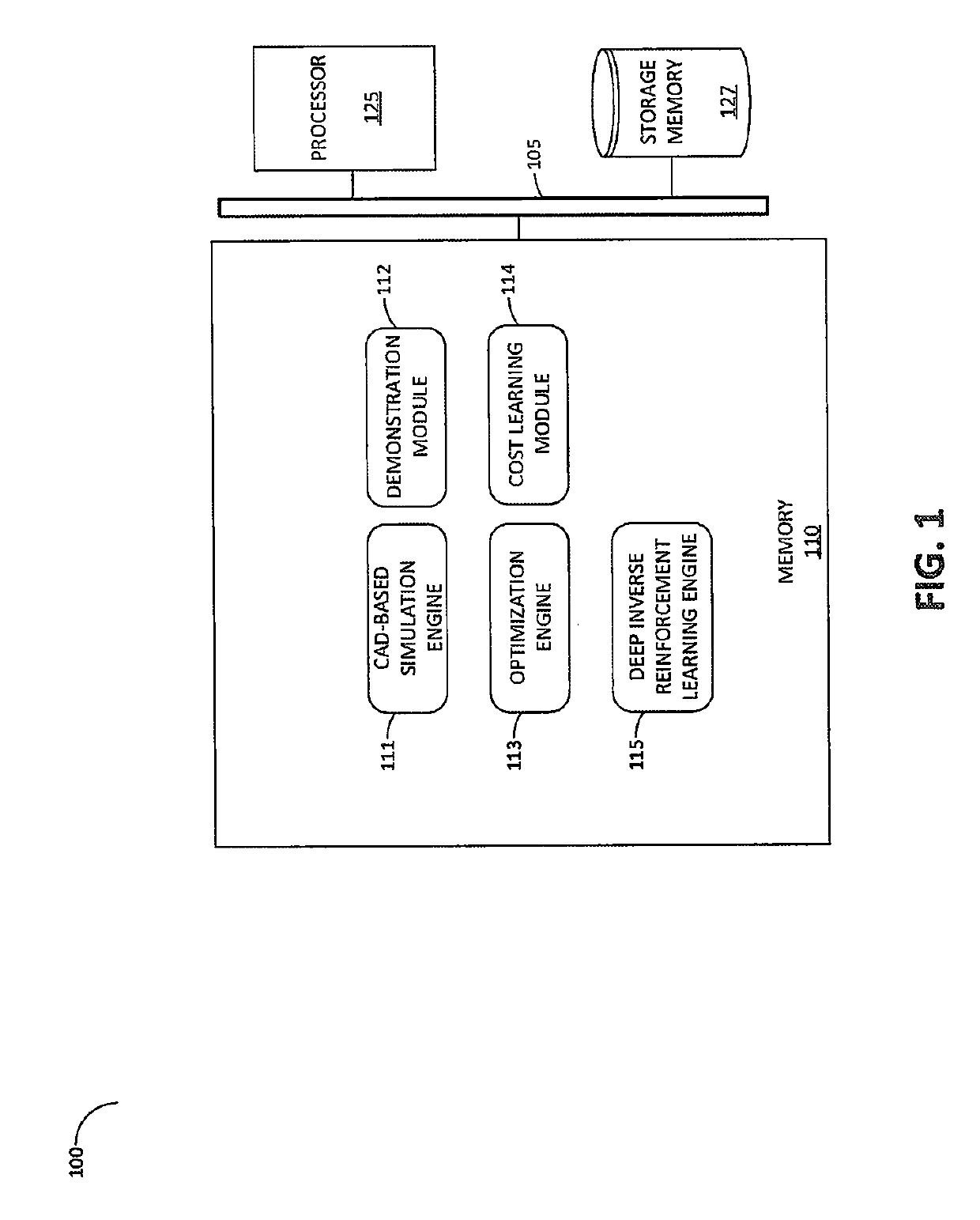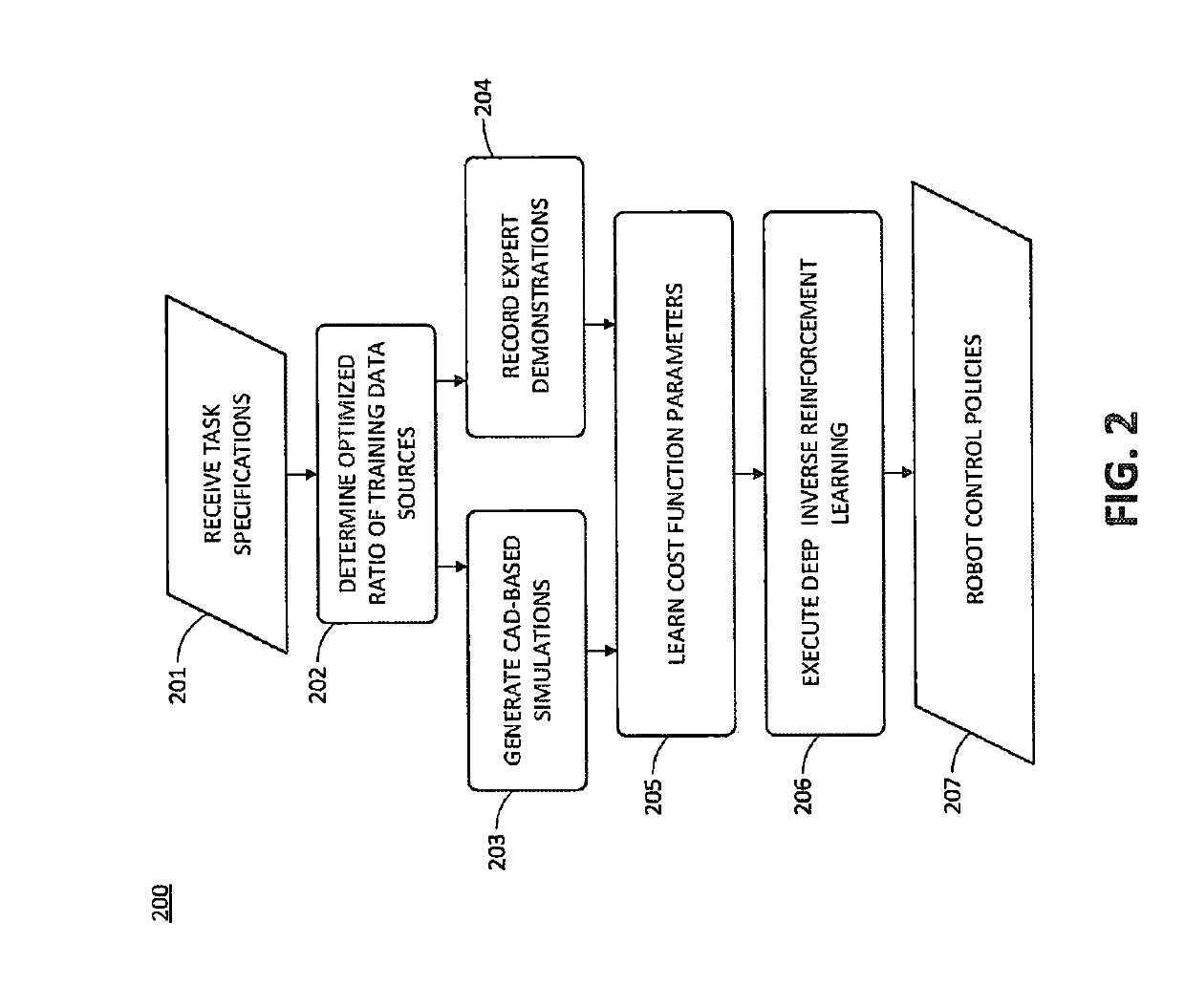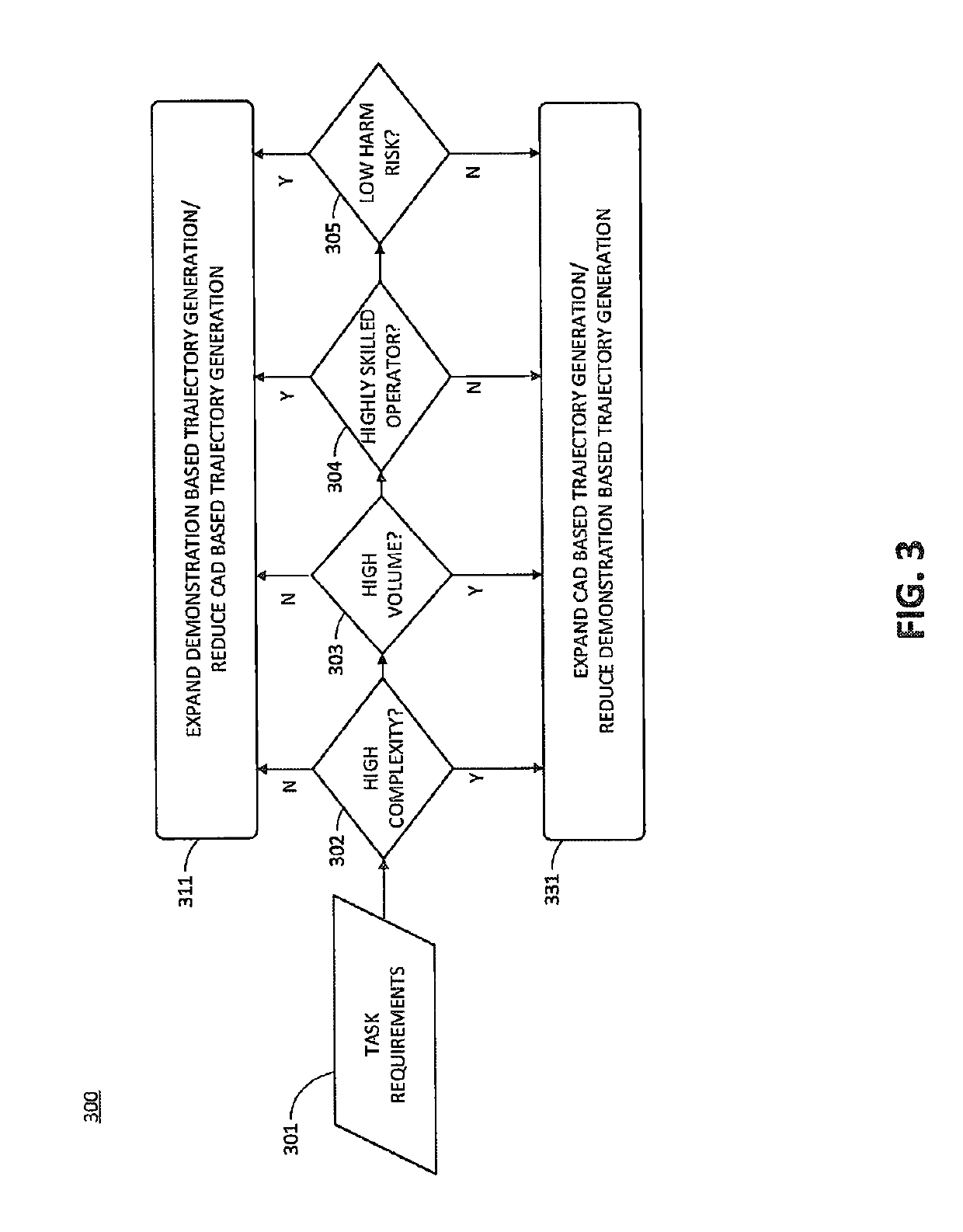Method and system for automatic robot control policy generation via cad-based deep inverse reinforcement learning
a deep inverse reinforcement learning and robot control technology, applied in the field of automatic systems, can solve the problems of requiring significant human intervention, time-consuming trial-and-error methods, and difficulty in defining cost functions in practice, and achieve the effect of reducing human intervention
- Summary
- Abstract
- Description
- Claims
- Application Information
AI Technical Summary
Benefits of technology
Problems solved by technology
Method used
Image
Examples
Embodiment Construction
[0012]Methods and systems are disclosed for integration of computer aided design (CAD) models and human expert demonstrations to learn cost function parameters, which are fed to a Deep Inverse Reinforcement Learning (DIRL) algorithm to automatically generate robot control policies. CAD software packages may be used to generate a number of candidate inputs (e.g., trajectories or other objective related inputs) of high quality as the training data set for cost function learning. This training data set may be augmented by a low number of expert demonstrations, the number being minimized by an optimization process. Reliance on CAD-based tools for the majority of inputs greatly reduces down time for robots and the physical risks to human demonstrators. An automatic cost learning algorithm may be implemented to identify the parameters of cost functions by minimizing the difference between the probability distribution of CAD-based inputs and demonstration based inputs. Methods and systems ...
PUM
 Login to View More
Login to View More Abstract
Description
Claims
Application Information
 Login to View More
Login to View More - R&D
- Intellectual Property
- Life Sciences
- Materials
- Tech Scout
- Unparalleled Data Quality
- Higher Quality Content
- 60% Fewer Hallucinations
Browse by: Latest US Patents, China's latest patents, Technical Efficacy Thesaurus, Application Domain, Technology Topic, Popular Technical Reports.
© 2025 PatSnap. All rights reserved.Legal|Privacy policy|Modern Slavery Act Transparency Statement|Sitemap|About US| Contact US: help@patsnap.com



